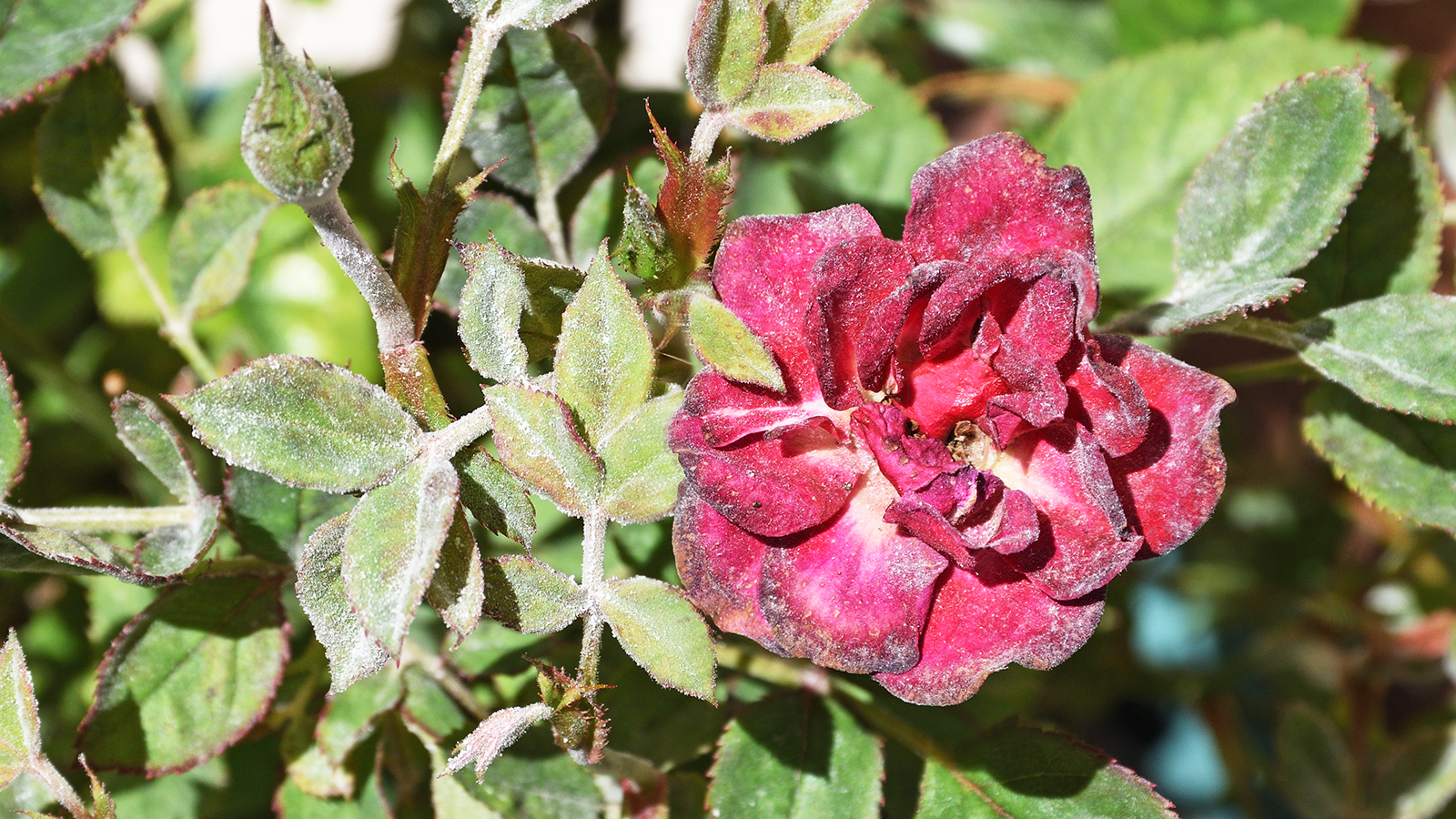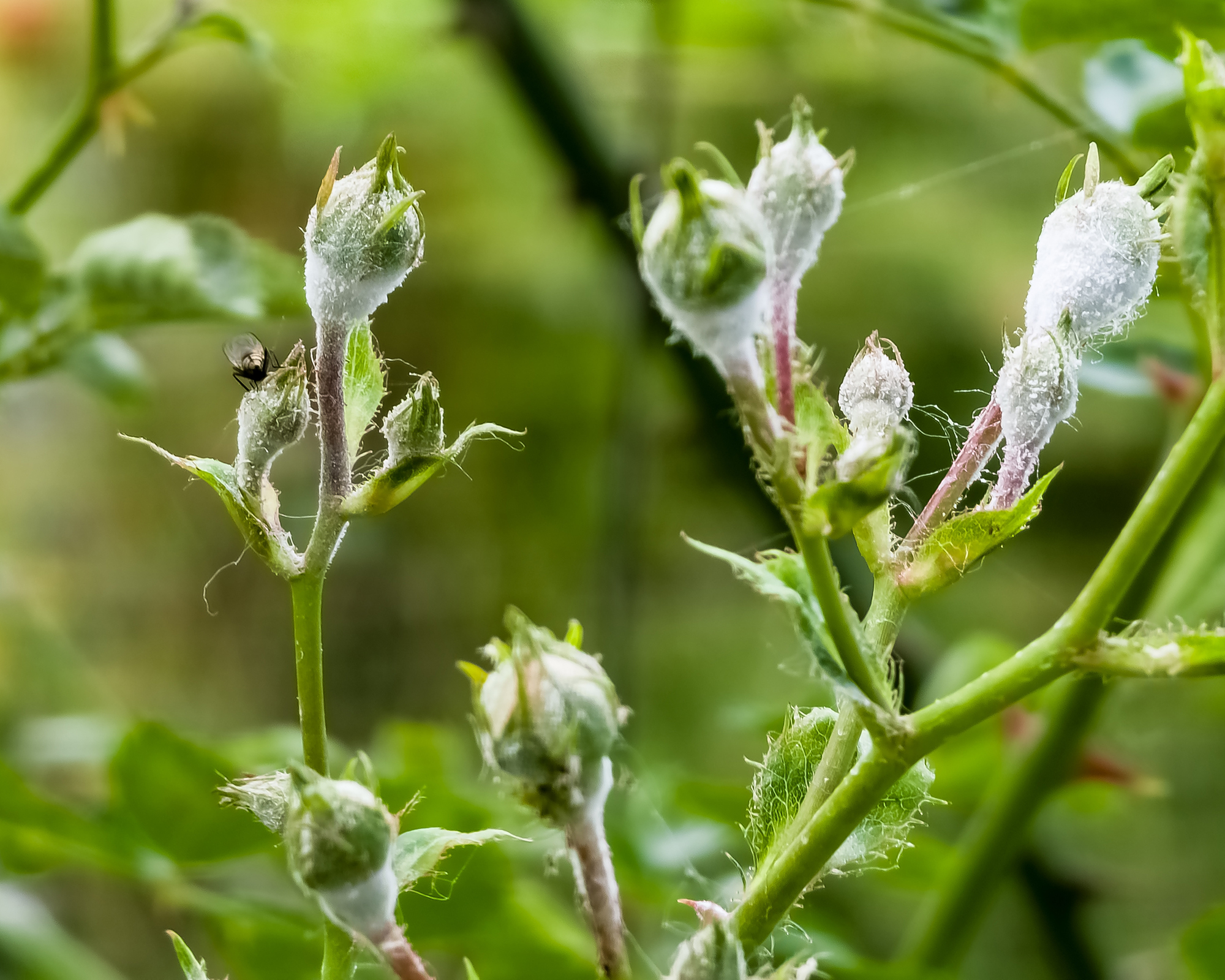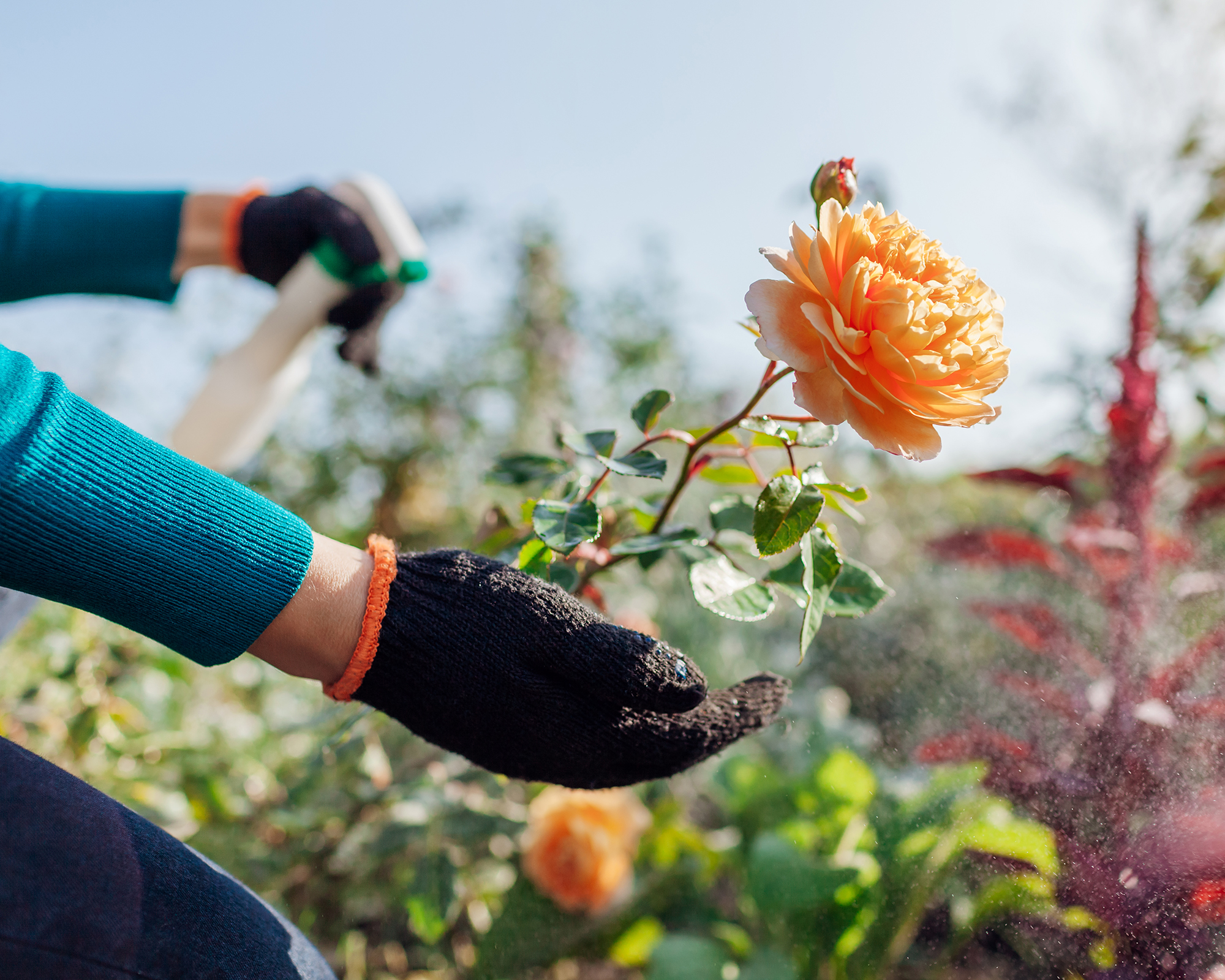Get Rid Of Powdery Mildew On Roses: Common Symptoms & How To Treat Them
If you have noticed a fine white substance on your roses, then they are likely suffering from powdery mildew. Learn how to treat and prevent this common issue.


Caroline Bloomfield
If you grow roses in your garden, at some point you will likely encounter a soft whitish coating on your plants’ leaves, stems, and sometimes buds. This substance is powdery mildew, known to experts as Sphaerotheca pannosa var. rosae. Powdery mildew on roses shows up more often than we’d like, especially in humid climates or damp environments.
One of the most common rose diseases, powdery mildew is not usually fatal to plants, but it can weaken them and affect flowering. There are cultural steps as well as chemicals that can prevent the disease, and it's important to take action as soon as you notice it to avoid spreading to other plants.
Whether you're just learning how to grow roses or are a seasoned pro, this infuriating disease can strike at any time. If you think you’re seeing powdery mildew on your roses, take a few minutes to learn why it’s there and what can be done about it.
What Causes Powdery Mildew on Roses?
Powdery mildew stems from a fungal spore. These overwinter in the soil, usually from left-behind infected leaves or stems. Spores may also come from mycelium in the ground or be wind-blown onto plant parts. The disease attacks stems, leaves, and flower parts.
When temperatures are around 68°F (20°C) and humidity is high, the spores germinate in around four hours, and within a day, the whole site is colonized. Moisture helps the fungus travel from one part of the plant to the next. Fresh new foliage on a rose bush is particularly vulnerable, especially where plants are crowded. Climbing roses are commonly affected.

Symptoms of Powdery Mildew on Roses
Rose powdery mildew is often not noticed until it has discolored the leaves. But early observation will find raised, red bumps on the leaves or stems. This occurs before the whitish powder appears. Once it does, powdery mildew looks a lot like it sounds – like a fine, soft powder sprinkled on your plant. Stems will be coated in fluffy, white stuff. Leaves and buds will have ashy white powder across the surface.
Left untreated, rose powdery mildew will attack the rose buds, stunting and disfiguring them, and preventing them from opening. Eventually, the stems distort, leaves die and fall, and the overall health of the plant suffers. Even worse, it can and will spread to other nearby plants.
Sign up for the Gardening Know How newsletter today and receive a free copy of our e-book "How to Grow Delicious Tomatoes".
Rose Powdery Mildew Treatment
Powdery mildew is one of the most common rose problems, but there are both synthetic and organic treatments available to manage it effectively:
Organic Treatment Solutions
Begin by removing affected leaves and any dead or decaying material around the base of the plant. Prune bushy growth to improve circulation – roses need breathing room to stay healthy and minimize the risk of infection.
Neem oil, available on Amazon, is one of the safest and most effective organic treatments for powdery mildew on roses. Dilute it in water – around 2 tablespoons per gallon of water – and spray liberally on affected areas.
Other organic solutions include sprays made with baking soda or potassium bicarbonate, such as this powder from Amazon. To create your own spray, mix 1 tablespoon of potassium bicarbonate or baking soda with ½ teaspoon of liquid soap (not detergent) in 1 gallon of water. Adding neem oil or other horticultural oil can also enhance effectiveness.

Synthetic Treatment Options
Synthetic powdery mildew treatment for roses may be found at nurseries and garden centers. Sulfur-based fungicides, either as a powder or a spray, are the most common treatments, but should not be applied to plants when temperatures are above 85°F (30°C) as they may harm your roses. Try this highly rated sulfur fungicide from Amazon. Products containing tebuconazole and triticonazole are also effective against powdery mildew.
How to Prevent Powdery Mildew on Roses
- At the end of the season, practice good hygiene by raking up any dropped leaves and removing any infected stems.
- When planting roses, position them in a sunny spot and space them wide enough to give them plenty of air circulation.
- Select disease-resistant rose varieties where possible. Rugosa roses and Knock Out roses, both available in the Gardening Know How Shop, are known to be more resistant to powdery mildew.
- Do not over-fertilize, as this can exacerbate the problem by producing excessive fresh growth. The best rose fertilizer for those vulnerable to powdery mildew is a slow-release rose food. Scotts' Rose & Bloom Continuous Feed, available at Amazon, is a slow-release product that keeps plants nourished for two months.
- Avoid overhead watering in the morning or evening and when it is windy, as spores will blow onto leaves and germinate. When watering roses, always do it at ground level.
Does Powdery Mildew Ever Go Away?
Control measures will have to be applied frequently in the warmer months. Apply your chosen product once per week. Pay close attention to the undersides of the leaves, as well as the stems and flowers. The formulas only kill what they come in direct contact with. It will take three to four weeks to see complete results.
Watch the plant carefully after the disease has been eradicated for reinfection symptoms, which can occur at any time during the growing season, but mostly during cool, cloudy, but dry weather.

Bonnie Grant is a professional landscaper with a Certification in Urban Gardening. She has been gardening and writing for 15 years. A former professional chef, she has a passion for edible landscaping.
- Caroline BloomfieldManager of Marketing Communications